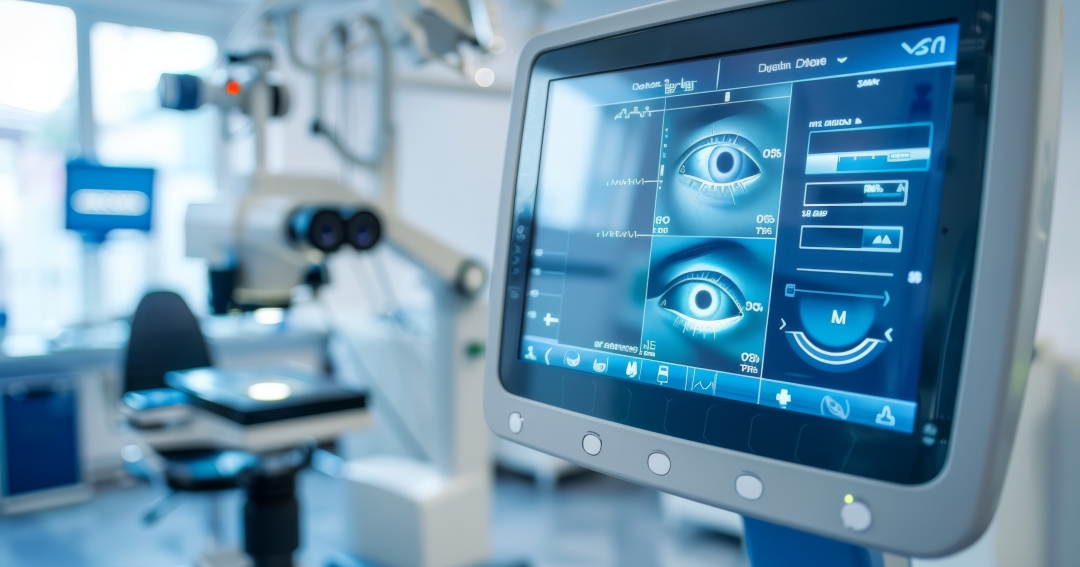No. AI is a support tool. It lacks the human insight, empathy, and clinical accountability needed in healthcare.
Worried About AI in Optometry? Here's What You Should Know

- Remove the current class from the content27_link item as Webflows native current state will automatically be applied.
- To add interactions which automatically expand and collapse sections in the table of contents select the content27_h-trigger element, add an element trigger and select Mouse click (tap)
- For the 1st click select the custom animation Content 27 table of contents [Expand] and for the 2nd click select the custom animation Content 27 table of contents [Collapse].
- In the Trigger Settings, deselect all checkboxes other than Desktop and above. This disables the interaction on tablet and below to prevent bugs when scrolling.
You've built your practice on personal relationships and clinical expertise. Now everywhere you turn, someone’s talking about AI revolutionizing healthcare. It's natural to wonder: Will artificial intelligence replace the human touch that makes your practice special?
Let's set the record straight—AI in optometry isn't about replacement. It's about enhancement. While smart tools can analyze images or streamline your front desk, they can't replicate your empathy, earn patient trust, or make nuanced clinical decisions.
Here's what AI really looks like in eye care and why it might not be as scary as it seems.
Understanding AI in Optometry: Separating Fact from Fiction
The term “artificial intelligence” can sound futuristic and intimidating. But in optometry, it often refers to tools you might already use, just under different names.
What AI Actually Does in Eye Care
AI in optometry focuses on pattern recognition. These systems compare images to thousands of others to identify signs of concern.
Common examples include:
- OCT scan analysis. Identifies subtle changes in retinal layers that could indicate disease progression.
- Diabetic retinopathy screening. Flags signs like hemorrhages and exudates for further review.
- Glaucoma detection. Analyzes the optic nerve and retinal nerve fiber layer thickness.
- AMD identification. Detects drusen and pigmentary changes in early stages.
AI systems in eye care fall into two categories:
- Assistive AI. Enhances accuracy and flags potential issues, working alongside doctors.
- Autonomous AI. Attempts to make decisions independently, but this is rare in clinical practice.
FDA-approved tools like EyeArt and IDx-DR are examples of assistive AI. They highlight abnormalities for human review—they don't replace the final say of a clinician.

5 Myths About AI in Eye Care Debunked
- AI will replace optometrists. No technology can replicate your experience, empathy, or judgment.
- AI makes decisions for me. AI tools offer recommendations or flags—not final answers.
- I'm not using AI now. If you use image analysis or diagnostic support, you probably are.
- AI will make care less personal. The right tools free up your time for more meaningful patient interaction.
- AI is dangerous for patient data. When properly built, AI systems follow the same healthcare-grade data security standards as any other compliant software.
Why Human Expertise Remains Irreplaceable
Effective healthcare depends on more than pattern recognition, no matter how advanced the technology. AI may never be able to replace:
- Patient relationships. You bring context, empathy, and personalized communication.
- Complex decision-making. Clinical care involves weighing lifestyle, comorbidities, finances, and preferences.
- Situational awareness. You understand when standard protocols don't apply.
- Accountability. You hold the license—and the responsibility—for clinical outcomes.

Real Benefits of Automation in Optometry
AI may not replace doctors, but automation can reduce inefficiencies. The most helpful tools are the ones that let you spend more time being a doctor.
- Time savings. Scheduling software, insurance verification tools, and automated reminders save hours each week.
- Error reduction. Systems that catch coding or claim errors before submission lead to fewer denials.
- Patient engagement. Automated follow-ups, recalls, and reminders keep patients coming back—and following treatment plans.
- Better insights. Tools that help interpret diagnostics provide second opinions without needing more staff.
Automation is already creating more time for patient care in practices that use it well.

Is AI Safe for Patient Data?
Security is one of the top concerns with AI, and rightly so. But AI tools used in healthcare are required to follow strict rules:
- HIPAA compliance. They must meet legal standards for privacy and security.
- Encryption. Data must be protected during use, storage, and transmission.
- Audit trails. Systems often include logging and reporting to track data access.
If you're already using cloud-based tools, you're likely using the same protections that AI systems use. The key is choosing trusted vendors who understand medical compliance.
It's Smart to Stay Curious About AI
You might think that avoiding AI is the safest path, but it's actually the riskiest. Staying informed allows you to:
- Ask the right questions. You'll know how to evaluate new technology when it comes.
- Spot overpromises. Vendors who claim AI can replace you are likely selling snake oil.
- Maintain control. Understanding how AI works lets you use it on your terms.
Technology is evolving. Staying curious keeps you empowered.
RevolutionEHR: Supporting the Way You Practice Since 2006
At RevolutionEHR, we know optometrists are careful, thoughtful, and committed to delivering exceptional care. That's why our approach to technology has always centered on supporting—not replacing—your expertise.
From practice management to patient engagement, every feature is designed to make your day smoother and your care more personal.
As the conversation around AI in optometry continues to grow, we're paying close attention. And no matter what the future brings, we will always be built around your priorities: patient trust, clinical control, and the freedom to focus on patient care.
To learn more about how RevolutionEHR supports practices like yours, schedule a demo today.



